There are many varieties of pepper, which are divided into two categories: sweet and hot. The latter are grown in summer cottages not so often, although caring for them is much easier. They do not need to be formed, they rarely get sick and are attacked by pests, and most of them normally tolerate sudden temperature changes.
However, not all hot pepper varieties are suitable. for cultivation in the open ground. When choosing certain species for planting, it is worth paying attention to the method of their breeding and further care for them: some of them should be planted in extremely limited quantities because of their severity, and some need certain conditions.
Content
Description of the best early varieties of bitter pepper for open ground
In order to get a rich harvest in the shortest possible time, you can plant on the summer cottage plants that produce fruits on average in 70-75 days. As a rule, small peppers grow on them, as the ripening period takes a little time, although there are exceptions. One of the main advantages is its rapid development, during which they are resistant to pests and do not require treatment.
Pay attention to such early varieties:
- Impala is an early hybrid, characterized by high productivity and suitable for both growing in the ground on the site and in the greenhouse. The plant is quite high and strong, its root system is highly developed. Impala has many leaves, which helps the plant to survive the heat without problems. On one bush, up to 12 fruits can be located, which have a length of 15-18 cm and a weight of up to 80 g.
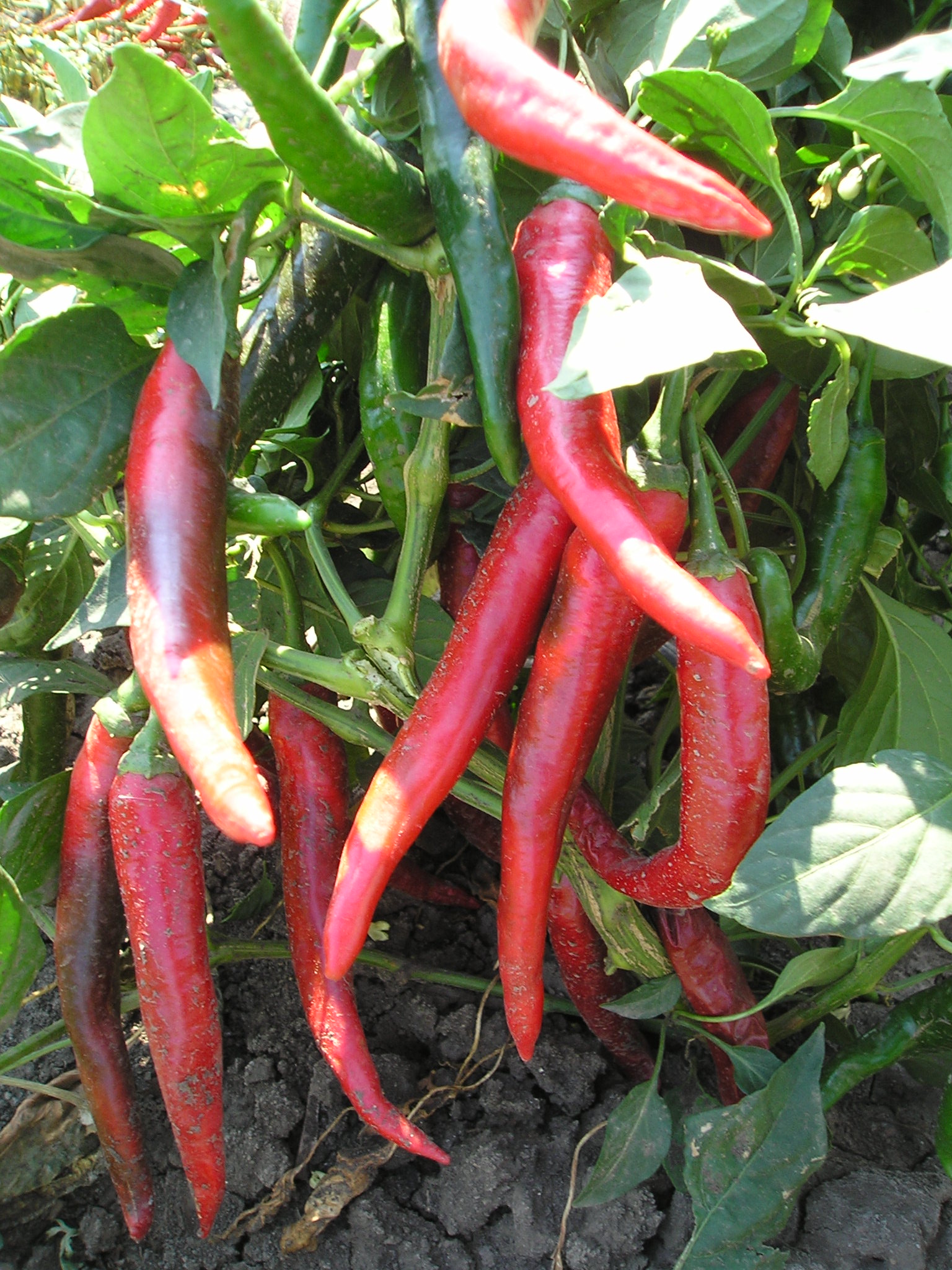
Impala - Wit - valued for precocity and decorative qualities. Its ripe fruits are used in cooking, as their small size is convenient for preservation and quick processing for the sauce. In open soil, Ostryak grows 50 cm in height, and in greenhouse conditions - 1.5 m. Pepper has a triangular shape and a curved tip, weighs 5-8 g. It is attached to the stalk by a medium-sized handle. The variety is resistant to prolonged drought and poor lighting.
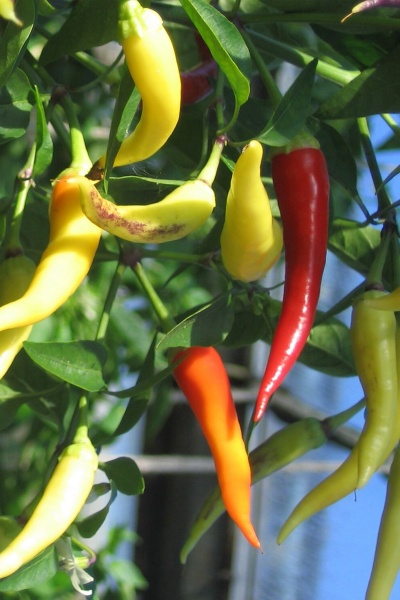
Wit - Tula pepper belongs to the early varieties, but among them it has the longest period before ripening - 90 days. It is a bush of medium height, on which, as the plant develops, single cone-shaped fruits weighing up to 20 g are formed. The average yield is 0.5 kg per plant, which is a fairly high indicator. The pulp of the fruit is very sharp.
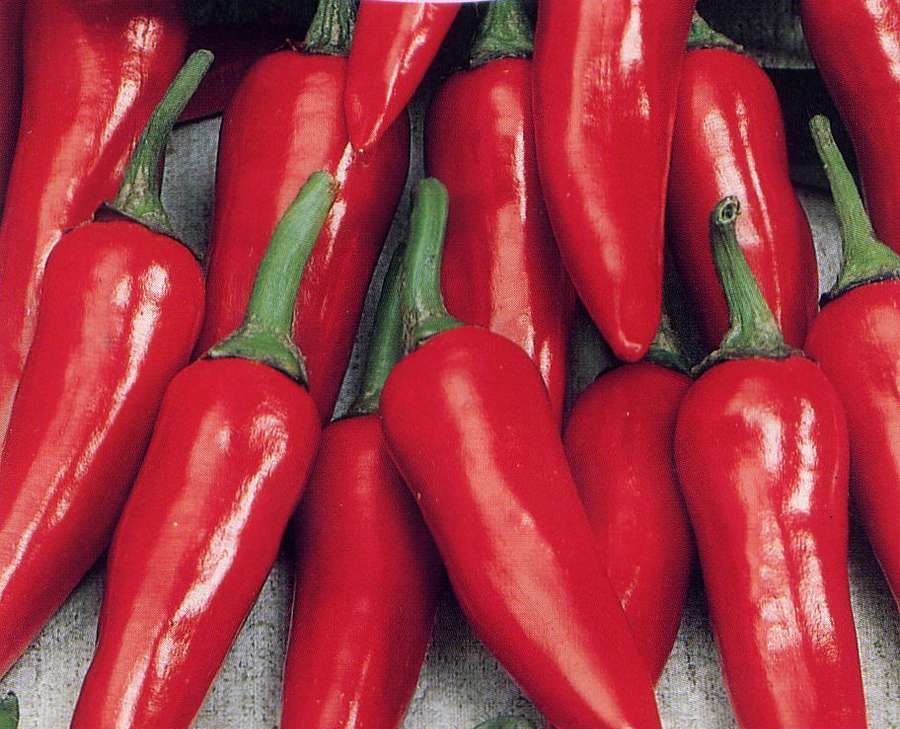
Tula - Chilean heat also belongs to early ripening species, however, at least 110 days must elapse before harvesting. Pepper has a conical, slightly curved shape, reaches about 20 cm in length. It has a strong, but pleasant aroma and bright taste. The variety is extremely demanding in terms of care: a few top dressings are enough to get a large crop.
 You may be interested in:
You may be interested in:- Habanero is the most popular variety of chili, known to many fans of spicy dishes. Habanero has the following characteristics:
- the fruit hanging on a long stalk is heart-shaped and weighs 15 g on average;
- is one of the most burning varieties of chili;
- seeds - the most saturated part of the plant in terms of taste;
- pepper often has an uneven surface, is covered with folds and wrinkles;
- from one medium-sized shrub you can collect up to 90 fruits;
- peppers are often not bright red, but orange.
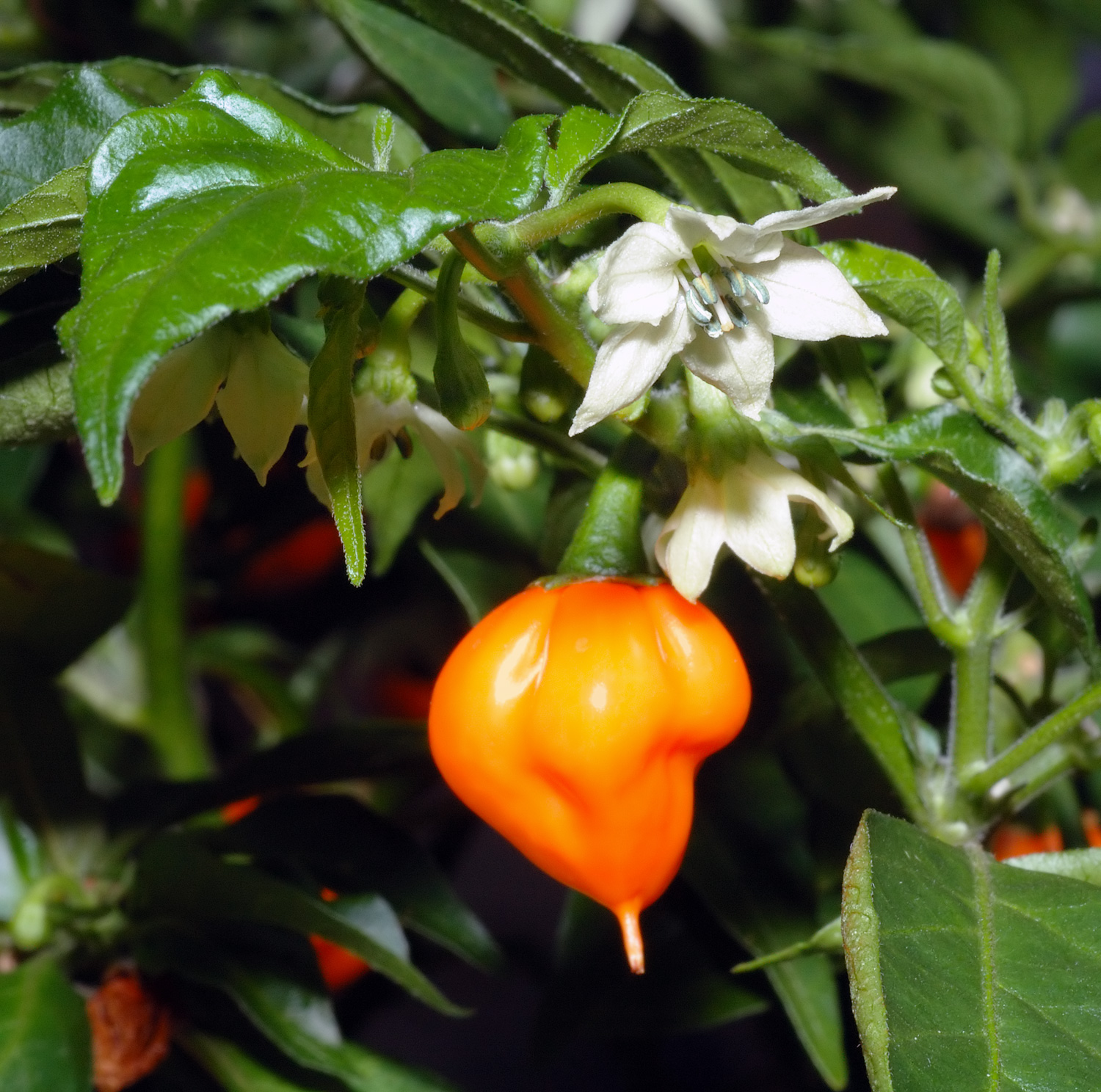
Habanero
Characterization of medium and late ripening varieties
The cultivation of plant varieties that bear fruit late is preferable for the southern regions, since then the risk that the pepper will die due to frost is reduced. Although some of the species are resistant to cold, and the Vizier is one of them.
Among late and mid-season varieties, it is worth paying attention to the following:
- Astrakhan pepper is a mid-season and most often grown variety. It is a compact plant - up to 50 cm in height. The fruits are bright red, have the shape of a cone and a smooth glossy surface. Their average size: 5-9 cm in length, and 2-2.5 cm in diameter. The variety is characterized by high productivity, and to increase it, it is desirable to plant the sprouts in loamy well-drained soil. Fruits are used for pepper tinctures and hot seasonings.
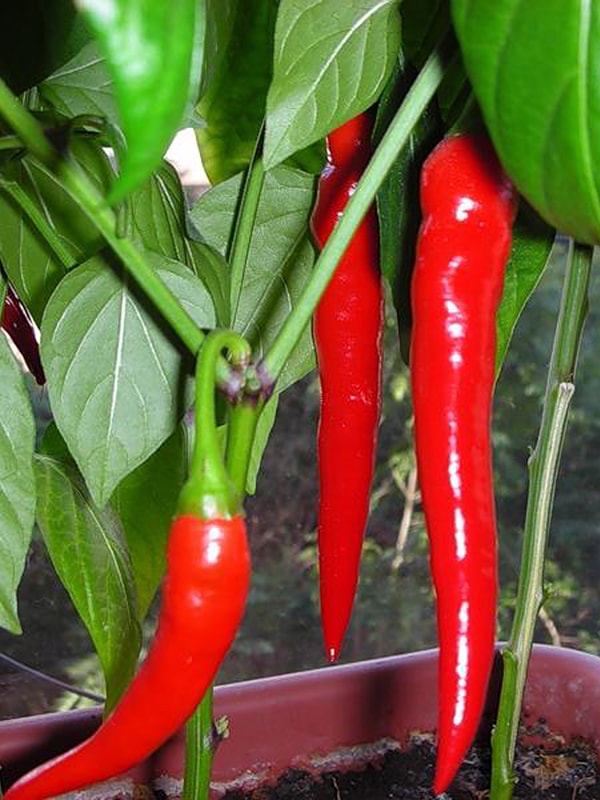
Astrakhan - Mid-ripe species also include the ram's horn. The plant is whimsical in growing, but the resulting fruits have valuable taste and decorative qualities: their taste is pungent and sharp, the aroma is quite strong, and the pepper itself has the shape of a cone. It is elongated and wrinkled mainly in the handle, and smoother at the tip, which can be twisted. The bush is branched, reaches 60 cm in height. The main requirement for growing is the lack of stagnation of water in the soil, otherwise the fruits will not taste sharp.
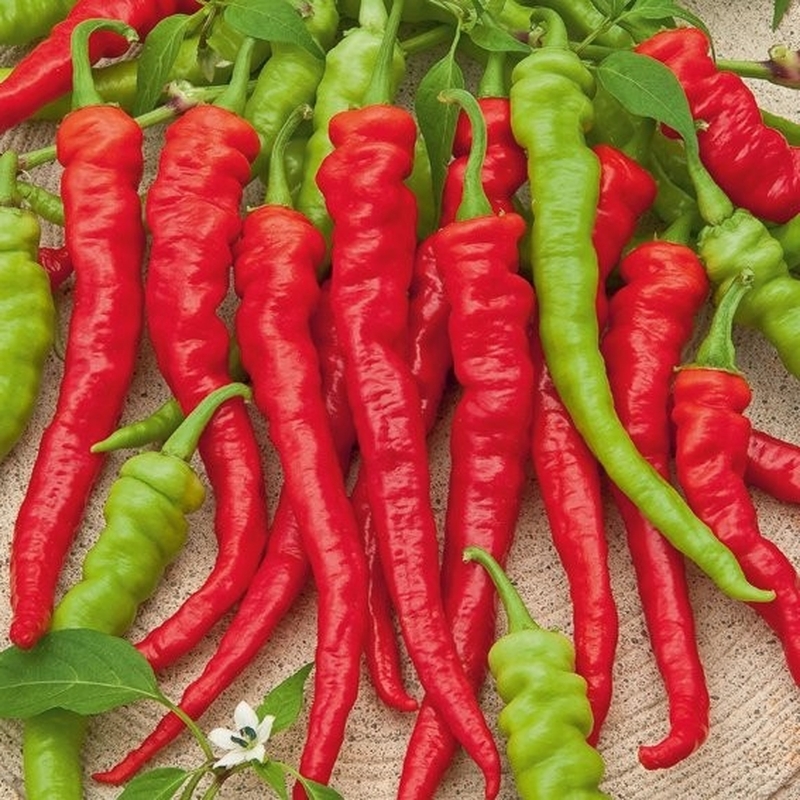
Ram's horn - Cayenne pepper is a relatively new species that has a shape typical of peppers, but the fruit size rarely exceeds 1.5 cm. Despite their small size, the shrub itself grows to 1.2 m, and in protected ground - 3 m. The pepper itself is hollow, with a wall thickness of not more than 2 mm. Often it has not only oblong, but also shapes similar to cherries and olives. Fruits can hang from the cuttings, as in most varieties, or stick out like candles.
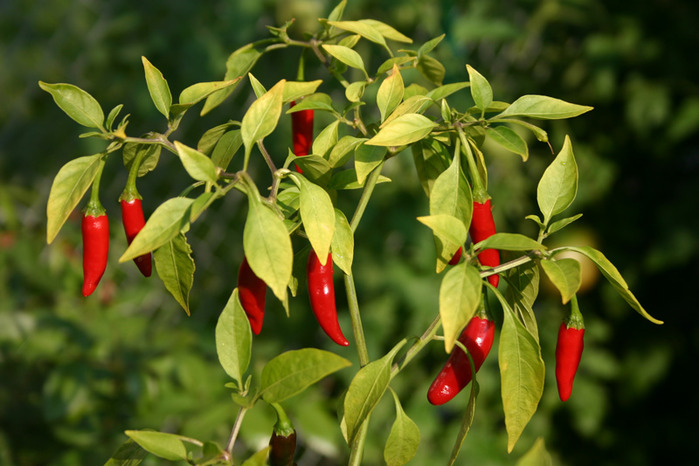
Cayenne pepper - Pepper Tabasco - a variety of chili pepper, which is grown mainly for the production of sauces. Despite the fact that it is a perennial, it rarely grows longer than 2-3 years. The variety is similar to Cayenne and is a shrub plant, reaching 1.5 m in height. The average diameter of the plant is 1 m.
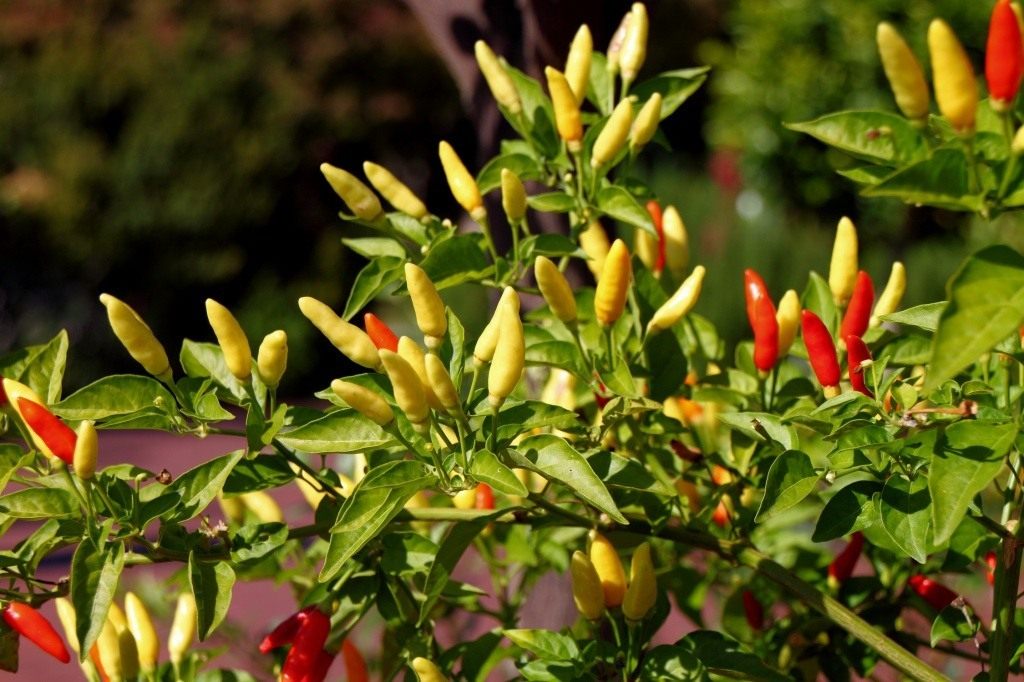
Pepper tabasco Fruits no larger than 4 cm in size are located on the bushes with bunches directed upward. On one bush there can be a lot of them, they are painted yellow-green at the beginning of ripening, after which they change their color to rich red. The plant is considered one of the most fertile and unpretentious in care, it is easy to grow in open soil.
- Vizier. This is a late-ripening plant, giving one of the most unusual fruit in the form of a turban. It is beneficial to grow it, since the yield is high in comparison with other species, and the pepper itself is very resistant to disease. The vizier is cultivated for canning and cooking hot spices. General characteristics:
- It is a high semi-spreading, but at the same time compact plant;
- fetal mass - 10-30 g;
- harvest time is in August-October;
- pepper is decorative, has an intense aroma and medium sharpness;
- most often, the fruits are fleshy and rich red, but may have a yellow or green hue.
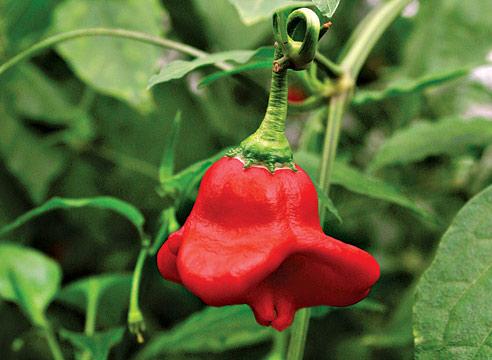
Vizier
Description of the most popular and most burning varieties
To determine the stiffness, there is a Scovilla scale that allows a comparative assessment of any peppers. In order to make it clear how sharp the product is, the following types can be compared:
- any bell pepper - 0 ECU;
- Tabasco - 5,000 ECU;
- Habanero - 100,000 ECU.
Among the most burning varieties of pepper for open ground are the following:
- One of the most widely cultivated species is the Trinidad scorpion (1.46 million ESU), which belongs to the varieties of chili.It got its name due to the small tail on the end of the fetus in the shape of a sphere or heart. The plant is a small bush growing up to 1 m. The leaves, like pepper itself, have an uneven surface. The root system is poorly developed. The fruits are large, their average diameter is 10 cm. The main requirement for the conditions of detention is fertilizer and planting at a distance of 40-50 cm from each other in a place protected from strong winds.
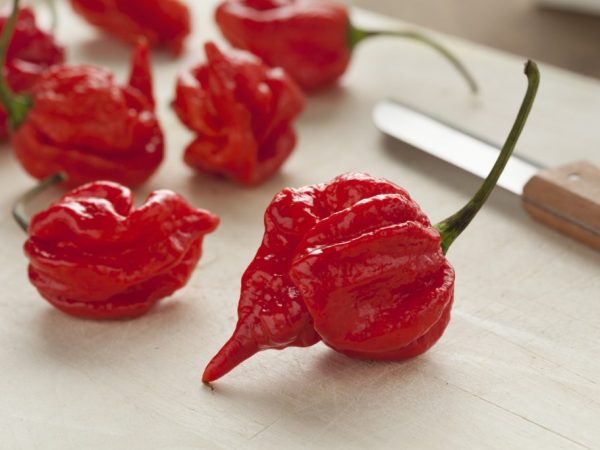
Trinidad scorpion - The Scottish cap (100,000 ECU) is one of the most unusual peppers in form, which got its name because of its similarity to the Scottish beret. Breeding it in large quantities is not recommended, since when eating a piece more than a pinhead, you can get numbness of the limbs and dizziness.
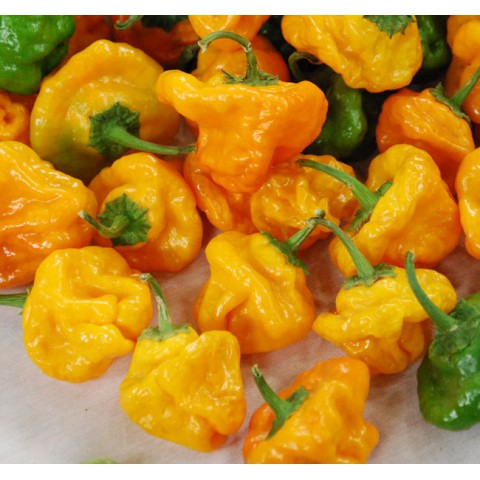
Scottish hat The plant is not too tall - about 60 cm, but stocky and strong. Ripe pepper is small, has a flattened shape and a wrinkled, shiny skin. Subspecies of the Scottish cap are orange and red. Despite the fact that they are all very burning, they give a light apple or cherry aftertaste. .
- Hot chilli hot peppers (50,000 ECU) are an early ripe and very sharp hybrid, growing up to 40-60 cm. Fruits are no more than 6-7 cm, located on petioles under the leaves, and in the process of ripening, they change their color from green to saturated cherry. They can weigh up to 25 g depending on care conditions. The vegetation duration of the species is 70 days. Superchilli is eaten in dried and fresh form, less often in canned food. Due to the strong sharpness of the pepper, it is impossible to plant it on the same bed with Bulgarian in order to avoid pollination.
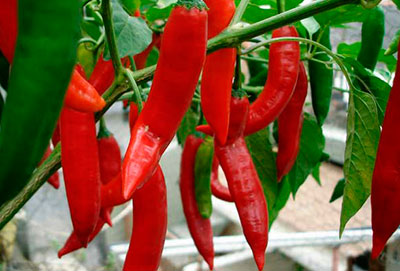
Hot Chilli Hot Peppers
Planting seeds and further care for peppers in open ground
Before planting seeds, they need to be prepared. First you need to sort through them, removing the empty ones, which can be done in the following way: pour them into a glass of salted water. Quality material pops up, and unsuitable material sinks. The selection is followed by a disinfection procedure: in a weak manganese solution, lower the planting material for half an hour, then rinse and prepare a new solution:
- dilute a teaspoon of nitrophoska in a liter of warm water;
- leave the seeds in it for a day.
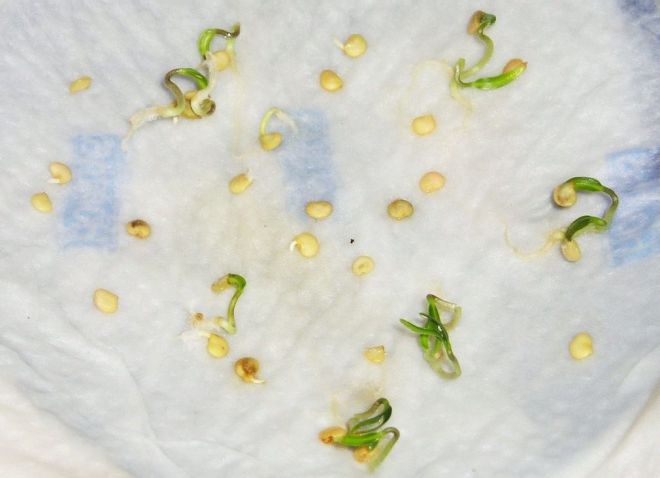
The next step that should not be neglected is hardening. For 2 days, place the seeds in the refrigerator, after another day, store at a temperature of 18 ° C, and again put in the cold for a couple of days. Then transfer them to wet gauze, cover with a film and wait for germination.
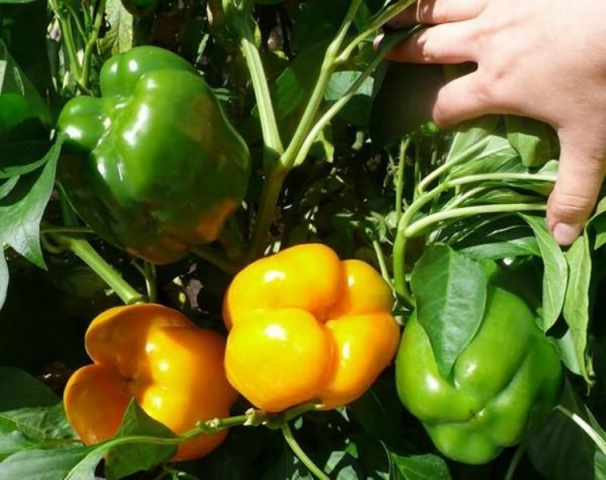 You may be interested in:
You may be interested in:To plant germinated seeds, you will need a soil rich in trace elements, and several small containers of peat. Pour small gravel on their bottom, on top - soil, and make 1 cm indentations. After the seeds you need to live in the holes, sprinkle with earth and pour over filtered water. The containers must be covered with foil and left indoors at a temperature of 15˚C.
Subsequent sprout care:
- Remove the film one week after emergence.
- Water them 1-2 times a week.
- Provide bright diffused lighting. When using fluorescent lamps, they can be turned on for no more than 2 hours.
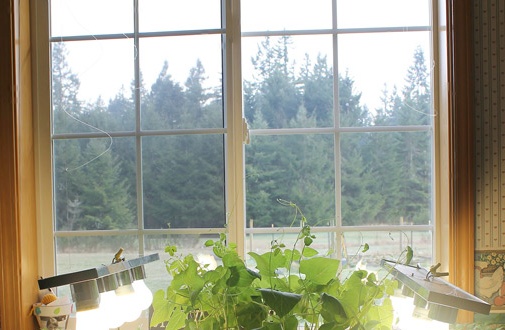
Seedling lighting - With the appearance of two leaves on each sprout, the seedlings will be ready for picking.
- Adult seedlings should be planted when the air temperature during the day does not fall below 20˚C. In open ground, plants should be located at a distance of 15-20 cm from each other.
- Watering should be frequent, but in small quantities. In hot weather, you can moisten the soil up to 2 times a day.
- When the plants are extended, they need to provide support, otherwise they will break under their own weight.
Common Growing Questions
- age: the larger it is, the less seeds will germinate;
- Shelf life: planting after 4-5 years of storage will not produce many sprouts;
- storage conditions: the content of the material for planting in a dry room at room temperature, in linen fabric will be optimal.
Sharp varieties are relatively easy to care for, and it will be easy to grow any sort of seed even for beginner gardeners. Even with a low percentage of germination, you should not be upset: the varieties are very sharp and even one fruit is enough for a long time to prepare spicy dishes.

 Calorie pepper stuffed with meat and rice - BZHU per 100 grams
Calorie pepper stuffed with meat and rice - BZHU per 100 grams Gorky pepper - the best varieties for open ground
Gorky pepper - the best varieties for open ground Hot pepper seeds - the best varieties for open ground and reviews
Hot pepper seeds - the best varieties for open ground and reviews Capsicum tincture for hair - how to use and reviews
Capsicum tincture for hair - how to use and reviews